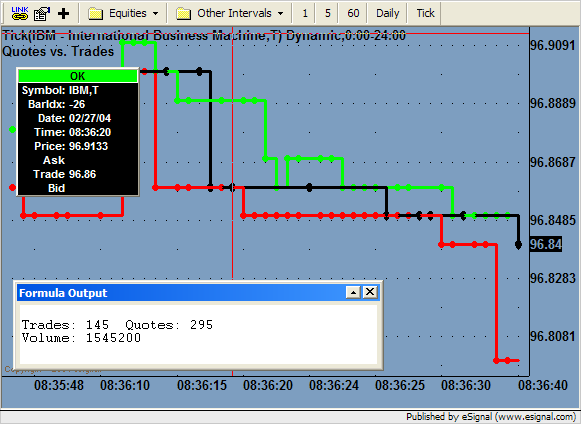OK, I'm really confused about delivery of bid/ask information using getMostRecentBid/Ask functions, and whether you need to have a new tic in order to enter the EFS instance.
Typically I use an interval chart such as 10s or 1 minute. I stay away from tick charts because of some graphical limitations.
But, I would like to get bid/ask updates and I think I need a tic in order for my formula to be called, right? This is at least true on an interval chart, from my experience.
But it seems that if I change the chart to "T", that I am informed of every bid/ask change, even though the most recent tic price value is delivered repeatedly as the close() price.
So, I'm confused. If I use an interval chart, I can't seem to get bid/ask updates without a tic. But if I use a "T" chart, then I can't distinguish between bid/ask updates and new tics. Is there any condition of getBarState() which distinguishes between bid/ask updates only, and new tics or trades?
Is there any way I can get bid/ask updates in my interval charts without a tic?
Can someone explain this to me?
Typically I use an interval chart such as 10s or 1 minute. I stay away from tick charts because of some graphical limitations.
But, I would like to get bid/ask updates and I think I need a tic in order for my formula to be called, right? This is at least true on an interval chart, from my experience.
But it seems that if I change the chart to "T", that I am informed of every bid/ask change, even though the most recent tic price value is delivered repeatedly as the close() price.
So, I'm confused. If I use an interval chart, I can't seem to get bid/ask updates without a tic. But if I use a "T" chart, then I can't distinguish between bid/ask updates and new tics. Is there any condition of getBarState() which distinguishes between bid/ask updates only, and new tics or trades?
Is there any way I can get bid/ask updates in my interval charts without a tic?
Can someone explain this to me?



Comment